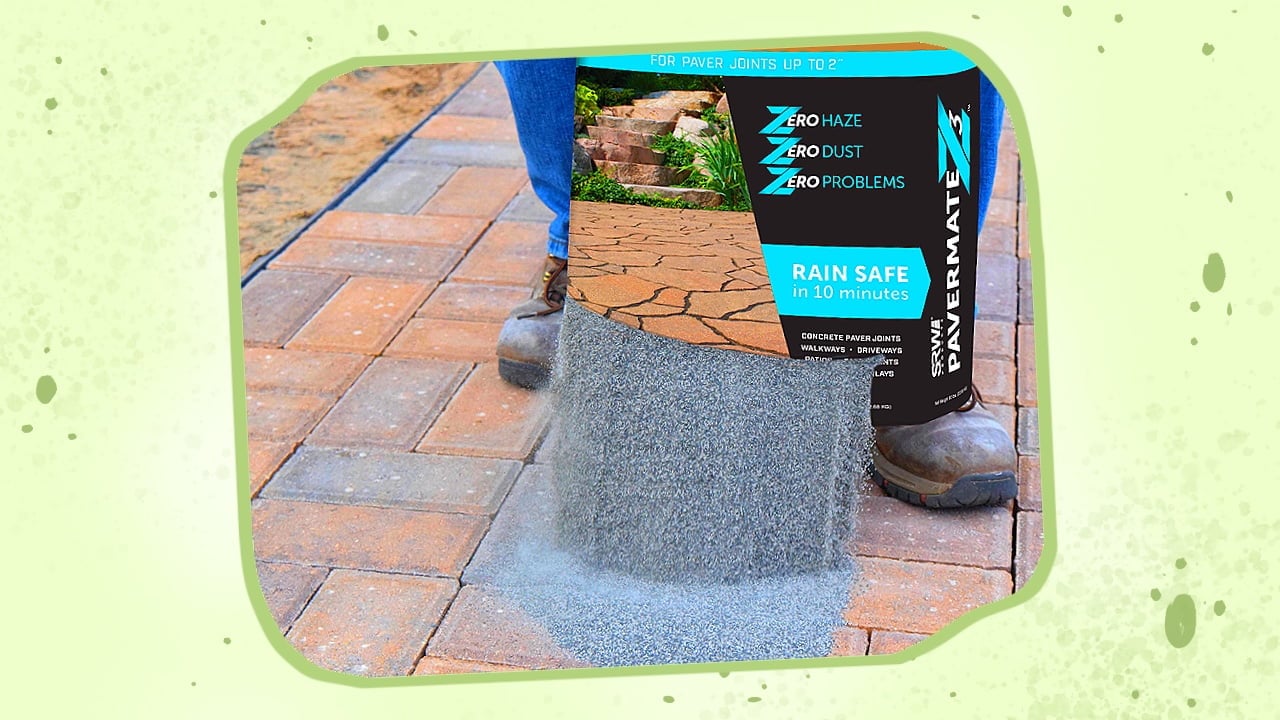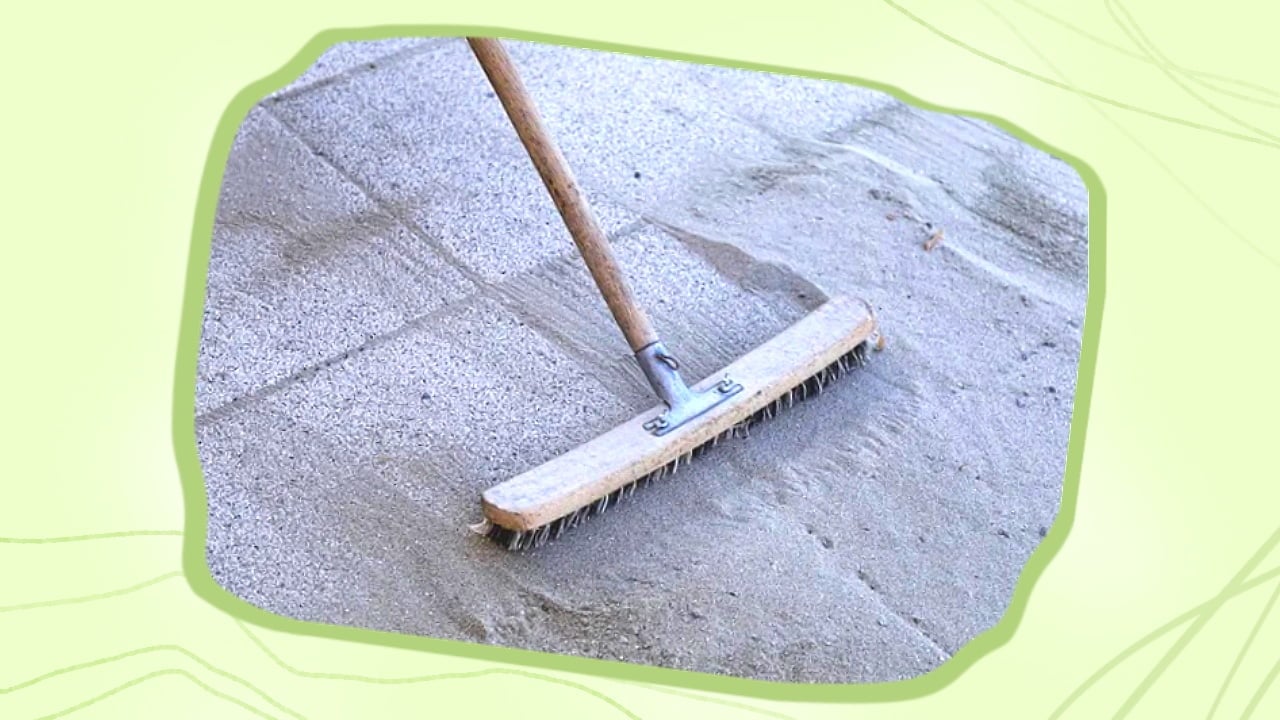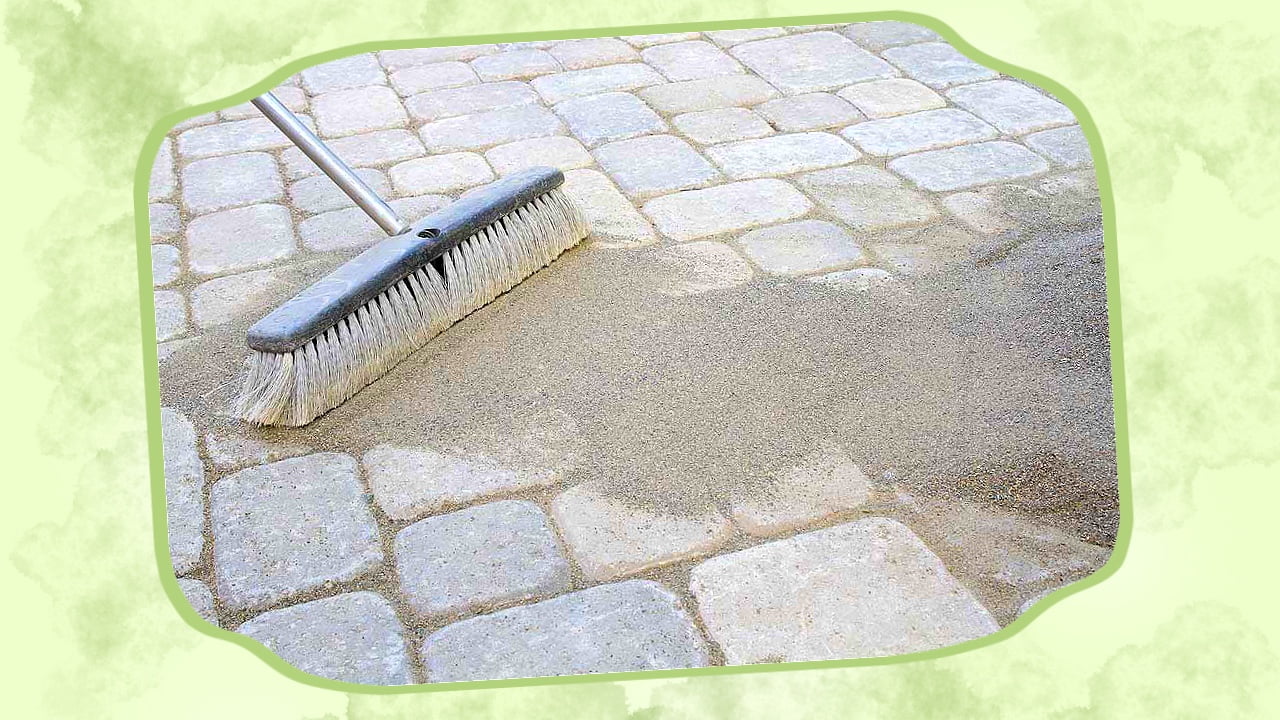Polymeric sand, also known as paver sand or jointing sand, fuses your pavers to strengthen your patio. You need just the right amount of sand to fill all the paver joints 3/4th of the way without spilling out on your patio surface.

Polymeric sand is used to lock concrete pavers together. It is used in patios, paved sidewalks, and garage floors.
It is different from traditional sand and mixed with an adhesive material like silica. When you add water, the adhesive properties set in, sealing the bond.
Now, you may be worried about choosing the paver sand amount. After all, you don't want to buy too much and let the excess hang out in your garage corner for the next decade.
On the other hand, buying more paver sand after running out will be difficult.
Thus, finding the right amount you need for your patio is crucial. Below, I've given more details about polymeric sand and my thought process to help you choose.
Why Do I Need Polymeric Sand?

I use polymeric sand so that I don't need to worry about rain, weed growth, or insects destroying the patio anytime soon.
What's more, this adhesive only needs to be applied once a decade with minimal maintenance costs. And, regardless of the color of your patio paver blocks, you can find suitable polymeric sand that blends into them.
How Much Polymeric Sand Do I Need?
Now, you need to know the amount of paver sand you should buy. To calculate this amount correctly, let's first consider the factors that will affect the amount of paver sand your patio takes up.
Factors Affecting The Polymeric Sand Amount
1. Patio Dimensions
Your patio dimensions include its area and shape. The larger the patio, the more tiles are needed to cover it. Thus, you need enough paver sand to fill all of these gaps.
However, the shape of your patio also affects this. If it's circular or curved, you'll need several smaller tile pieces to cover the paver joints without irregularities. As a result, you will use up more polymer sand.
2. Paver Dimensions
As a general rule, large pavers will cover the patio easily in fewer numbers. However, you require hundreds of small tiles to fill the same area.
Additionally, simpler shapes have fewer gaps. A triangle is the most uncomplicated shape, and each paver will have around 3 gaps between adjacent members. In the same way, a square has 4 gaps on each side; a pentagon has 5, and so on. If you want stylized or curved tiles, they will increase the gaps significantly.
3. Size Of Paver Gaps
Depending on your paver borders, the gap between them might vary.
A paver might have a honed edge and be firmly interlocked, leaving tiny cracks. On the other hand, manufacturers might create pavers with slightly rounded edges. These need more paver sand.
Calculation Of The Polymeric Sand Amount
Knowing The Patio Area
Ideally, you'd know the area of the patio. However, if you don't know the exact number or forgot it, there are simple ways to calculate the area.
If your patio has straight borders, the task will be easy. Just measure the length and breadth and multiply them to get the area.
On the other hand, if you have a more complicated or curved patio, the calculations will be more complex. If it's a recognizable shape like a pentagon or a hexagon, just look up "find the area of [shape]" and calculate it accordingly. If it's circular, treat the farthest point like the breadth and take a rough estimate.
Estimating The Joint Sizes
You can easily determine the joint size if the patio is paved. To do this, take a ruler and measure the gap between any two pavers. If the patio is even, this is the average gap size.
As a rule of thumb, a small gap is usually less than 0.3 inches in width. If the gaps measure 0.3 inches or more, they are wide.
Also, if you haven't paved the patio yet, you can still measure the gaps. Take out two pavers and place them side-by-side on a table. Then, press them firmly from both sides to ensure the gap is accurate, and measure it.
Finding The Product Coverage Area
The particular paver sand you purchase will have a specific product coverage ratio. You can usually find it on the back of the bag or in the product description online.
I'm using the most common coverage ratios I see to teach you the calculations. However, you should customize this according to your product.
Calculating The Amount Of Sand
Usually, a 50-pound bag of polymeric sand is enough to fill 75 to 100 square feet of a patio if it has small gaps. Thus, you need about 0.5 pounds per square foot for narrow paver gaps.
For wider gaps, you need 70 to 100 pounds of polymeric sand. Sometimes, there are irregular gaps in the patio. You should buy about 250 pounds to fill the wider gaps in this case.
If you find your exact product coverage, you can just divide the patio surface area by it. This quotient will tell you how many pounds of paver sand you need.
How Do I Add More Polymeric Sand To My Patio?
In rare cases, you might underestimate the amount of sand you'll need and have to go get more.
Thus, you're adding more polymeric sand to fill the gaps left by the existing sand. This is easy, but you should ensure that none of the sand has sealed. If you water half of the patio, this half will harden before you add the rest. Therefore, a gap will stay between them.
As a beginner, I sometimes messed up and let the partial sand harden. When this happened, I used a pressure washer to remove the hardened sand before redoing the patio.
What Should I Do With Too Much Polymeric Sand?
Sometimes, I do all the calculations and still end up with too much jointing sand. It happens to the best of us, and the amounts are only an estimate. If this is your situation, you'll be wondering what to do with all the extra sand now.
First and foremost, do not pour this extra sand onto your patio. If all the gaps are already filled, more jointing sand will collect on your paver surfaces and solidify in lumps, making your patio irregular. This is especially bad if pets or children walk onto the patio barefoot.
So, when you have leftover polymeric sand and don't want to throw it away, you can do a couple of things. First, look in other areas like the driveway, garage, and front door stairs. If you have weed growth issues in any of these places, the polymeric sand will stop it.
However, if you're still left with the bag, store it safely because you never know when you'll need it later. You might have to redo the same patio if you made some mistakes or if a particularly bad hurricane damages it. So, store the polymeric sand in an airtight bag and keep it handy.
Warning
You shouldn't pressure wash pavers after you use polymeric sand. It's resistant to water but not to a lot of force hitting it at high speeds.
Only use a pressure washer on your patio when removing the previous application.

How Much Polymeric Sand Do I Need Conclusion
Polymeric sand, when applied correctly, hardens and seals your pavers together and keeps your patio safe from pests or structural damage.
Estimating the amount of sand you need in advance will help you save time, money, and energy. I use a few factors to know how many bags to buy, and I've described my calculations to help you do the same.
Ultimately, you should trust your gut and note the particulars about your patio and pavers. For example, if your pavers are really high, you'd need more sand.
At all times, your best bet is to note the product specifications and factor them into your calculations accordingly. Using the right amount of sand will make your patio safe, durable, and more pleasing to the eye.
